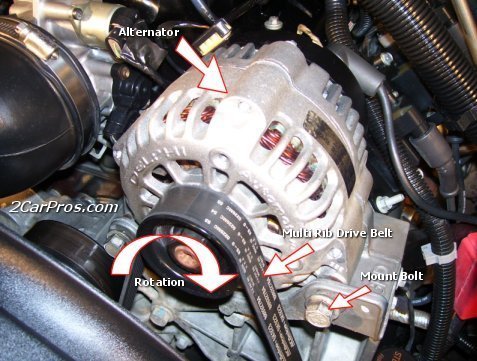There's a lot of misinformation here. You found the dull dark green wire. That is the fuse link wire. Tug on it. If it acts like a wire, it's good. If it acts like a rubber band, it's burned open. The problem is it doesn't come off the battery cable like in years past. The smaller positive battery wire bolts to the under-hood fuse box. That connection is where the fuse link wire is bolted.
The next problem is most of these diagrams only show what is relevant to the specific circuit. You could have multiple fuse link wires bolted to that connection, but the one for the alternator does not go to the Engine Computer. It goes straight to the alternator's output terminal.
There is no need to even have to know where that fuse is unless testing proves otherwise. Just measure the voltage on the alternator's output stud. It should have full battery voltage all the time. If it does, you're done in that circuit.
Forget the ASD relay. It's true that it sends current to the alternator's field winding, but it also powers the ignition coil pack and injectors. If the engine runs, the ASD relay is turning on. Less than ten seconds to eliminate those two circuits.
It is also correct the voltage regulator lives inside the Engine Computer, but it is incapable of being damaged by the alternator. They put it there to simplify the circuitry needed to provide information used to modify the target charging voltage. That can include wide-open-throttle, turning on the AC compressor, engine running too hot, ambient air / battery temperature real cold, etc. It is possible for the regulator circuit to fail, but it's not very common. I've only run into one since 1990. That low-current circuit is also real easy to test. Look at the two smaller terminals bolted to the back of the alternator. The engine must be running for them to have voltage from the ASD relay. One will have full battery voltage. The other one must have less, but not 0 volts. If you find 0 volts, the brushes are worn. (Nine bucks for a replacement assembly). If you find exactly the same voltage on both terminals, there is a break after that point. That could be the voltage regulator is open, but it is much more likely there's a corroded terminal in the connector going to it.
Typically you'll find between 4-11 volts on the second terminal. The lower the voltage, the greater the difference there is across the two of them, and the larger the electromagnetic field is. That one voltage will tell you if the low-current input circuit, including the voltage regulator, is working.
Tuesday, February 21st, 2017 AT 8:09 PM









